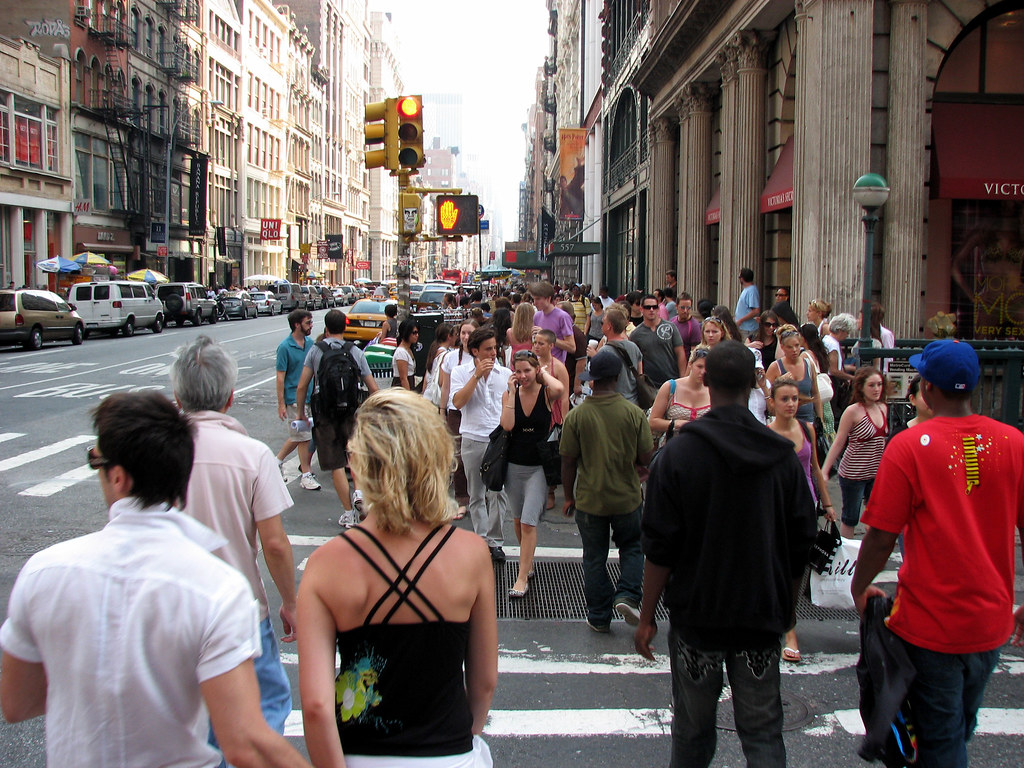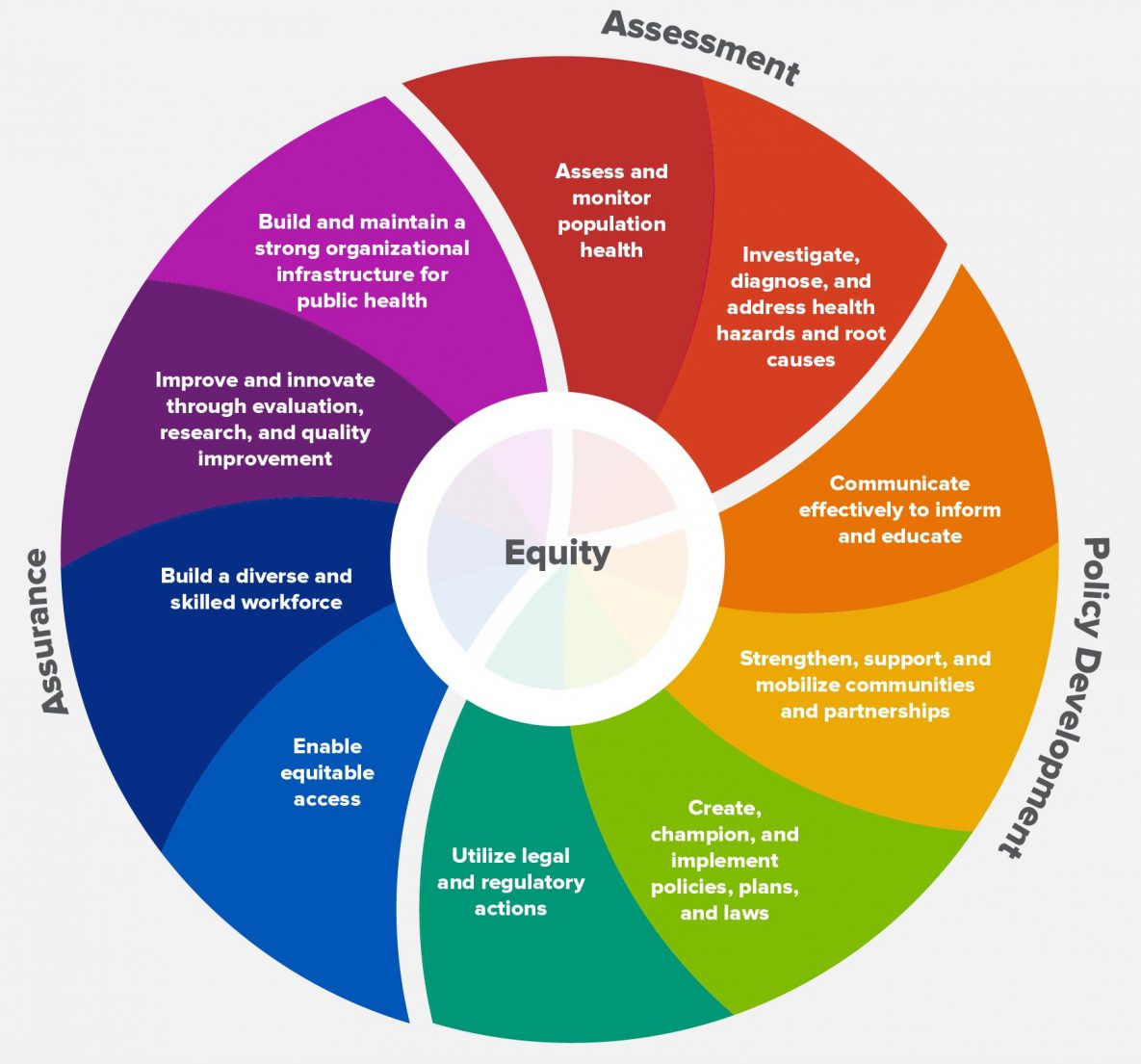Transportation and Public Health
A focus on community well-being through improved mobility

As defined by the American Public Health Association, “Public health promotes and protects the health of people and the communities where they live, learn, work, and play.” Public health can be understood as focusing on the promoting the health of a community or of the general population, not just those who are currently dealing with an illness or disease. In this definition, it is clear that the realm of public health reaches far broader than just health care services.
How is public health managed?
The network of organizations that make up the public health system is defined by the Centers for Disease Control and Prevention (CDC) as “all public, private, and voluntary entities that contribute to the delivery of essential public health services.” The CDC identified 10 essential public health services that are used as frameworks for public health priorities, initiatives, and programs:
- Monitor health status to identify and solve community health problems
- Diagnose and investigate health problems and health hazards in the community
- Inform, educate, and empower people about health issues
- Mobilize community partnerships and action to identify and solve health problems
- Develop policies and plans that support individual and community health efforts
- Enforce laws and regulations that protect health and ensure safety
- Link people to needed personal health services and assure the provision of health care when otherwise unavailable
- Assure competent public and personal health care workforce
- Evaluate effectiveness, accessibility, and quality of personal and population-based health services
- Research for new insights and innovative solutions to health problems

How does transportation intersect with public health?
Transportation and public health intersect on the community level in many activities. These activities include, but are not limited to, the following:
- Ensure individuals who do not drive can remain active in their communities
- Supporting active transportation, including safe walking/biking routes to schools
- Ensuring people have access to health-promoting recreation opportunities
- Ensuring people can choose safe neighborhoods to live in and still have access to essential destinations
Partnerships between transportation and public health
Potential partners in the public health space can include state and local public health departments, local, state, and national non-profits focused on public health, urban and community planners, and others interested in community health, well-being, and safety. In addition, it is important to note that public health often coordinates with health care entities to support and expand their work; therefore, NCMM encourages coordination between the two sub-sectors of health.
For further investigation . . .
Healthy Built Environment Linkages Toolkit
This Toolkit is intended to support the inclusion of health considerations within community planning and design. It is designed as a quick reference to the body of research evidence which describes how our built environment can influence population health.
Scoping Assessment of Transport Design Targets to Improve Public Mental Health
This assessment aims to identify potential research and innovation targets to better leverage transportation design for mental health promotion.
Additional resources
SeniorCare Inc. Medical Transportation Program
SeniorCare Inc. – Gloucester, MA
Recognizing that they would not be able to fill all trip requests with just their volunteer driver program, they also set out to become knowledgeable about other transportation options in the region, and to share that information with their riders. SeniorCare began by reaching out to area Councils on Aging and the local transit authority to learn about their transportation services. They compiled a town-by-town listing of transportation resources, posted on the SeniorCare website. To keep the information up to date, SeniorCare does regular outreach. When a new caller requests a ride, SeniorCare’s Transportation Coordinator discusses all transportation options appropriate for them and mails them a welcome packet with that information.
Franklin County Access Pilot for Nonprofits
Franklin Regional Transit Authority – Franklin County, MA
In November 2021, Franklin Regional Council of Governments (FRCOG) a new program, entitled the Franklin County Access Pilot for Nonprofits. It was created for a coalition of local health and social service agencies. FRCOG had funding from a state legislative earmark that they originally planned to use to subsidize Lyft rides. The Lyft pilot was delayed due to lack of Lyft drivers in the rural area, and in the meantime, FRTA’s in-house ride-hailing program, Access, launched. , so FRCOG pivoted to subsidize microtransit rides instead of Lyft rides. FRTA’s Advisory Board met in May 2022 to discuss the future of these initiatives and voted to make the FRTA Access a permanent program.
Public & Senior Transportation
OCCK Public Transportation – Salina, KS
On the Go: Enticing Seniors to Try Salina’s Public Transportation program began in 2022 as a partnership between the Salina Senior Center, OCCK Transportation and the Mobility Manager for North Central Kansas. The goal of the program is to increase the number of senior citizens using Salina’s public transportation system.
Long-distance Medical Transportation
Cape Cod Regional Transit Authority – Hyannis, MA
To promote access for Cape Cod residents to specialty medical appointments in Boston, the Cape Cod Regional Transit Authority (CCRTA) has run a Boston Hospital shuttle since 2001. The shuttle starts on the Outer Cape and picks passengers up at seven stops in different Cape towns, and then drives into Boston and drops passengers off at their appointments. In the early afternoon, the shuttle picks riders back up for the return trip to the Cape. Prior to the pandemic, service ran one daily round trip five days a week; since the pandemic, the shuttle runs Monday through Thursday. In order to serve as many residents as possible, the shuttle is open to the general public.
County-wide Volunteer Driver Program
City of Pittsfield RSVP Program – Pittsfield, MA
Wheels for Wellness exemplifies two promising practices: cross-sector collaboration and building on existing assets. When deciding what type of transportation program to pilot, the partners selected a volunteer driver program because it built on what they identified to be the county’s assets: an older population, a high rate of car ownership, and a strong regional culture around looking out for each other. They then looked to existing volunteer driver programs in the region to see how they might scale these local and regional initiatives. A regional volunteer driver program run by an all-volunteer healthcare facility in Southern Berkshire County inspired them to serve the entire county. They then identified the Pittsfield RSVP program as having potential to scale up its operations.
Regional Transportation Planning
Maumee Valley Planning Organization – Maumee Valley, OH
The mobility management program at Maumee Valley Planning Organization began in November 2020. The project launched a Coordinated Transportation Plan with the goal of developing consensus across all jurisdictional counties.
